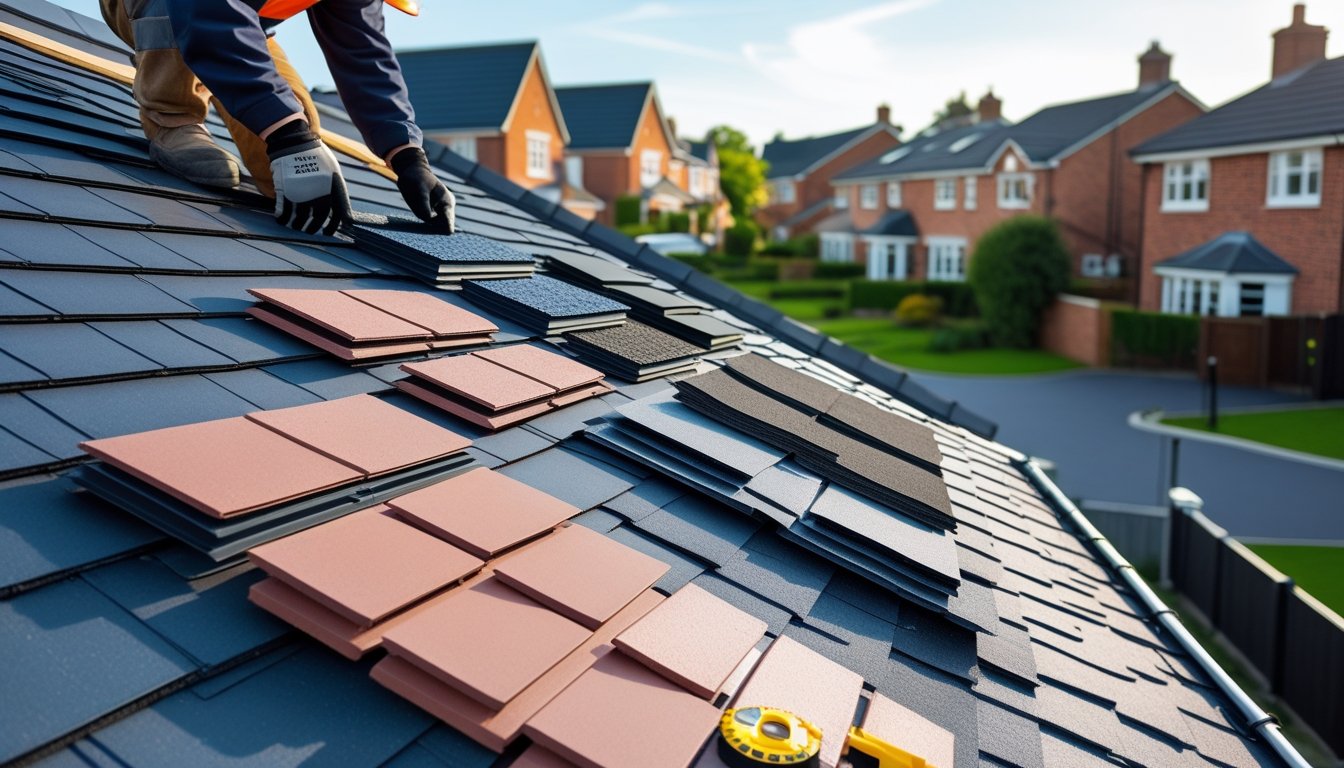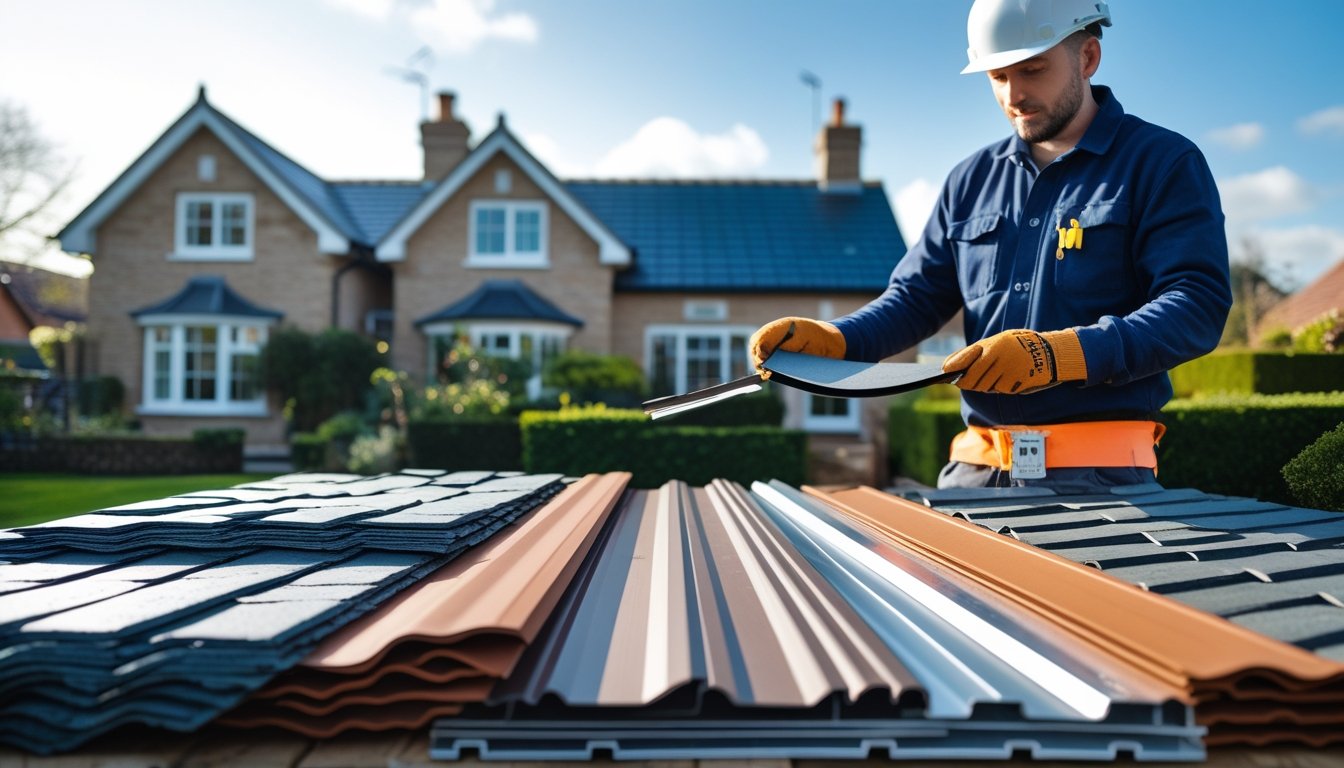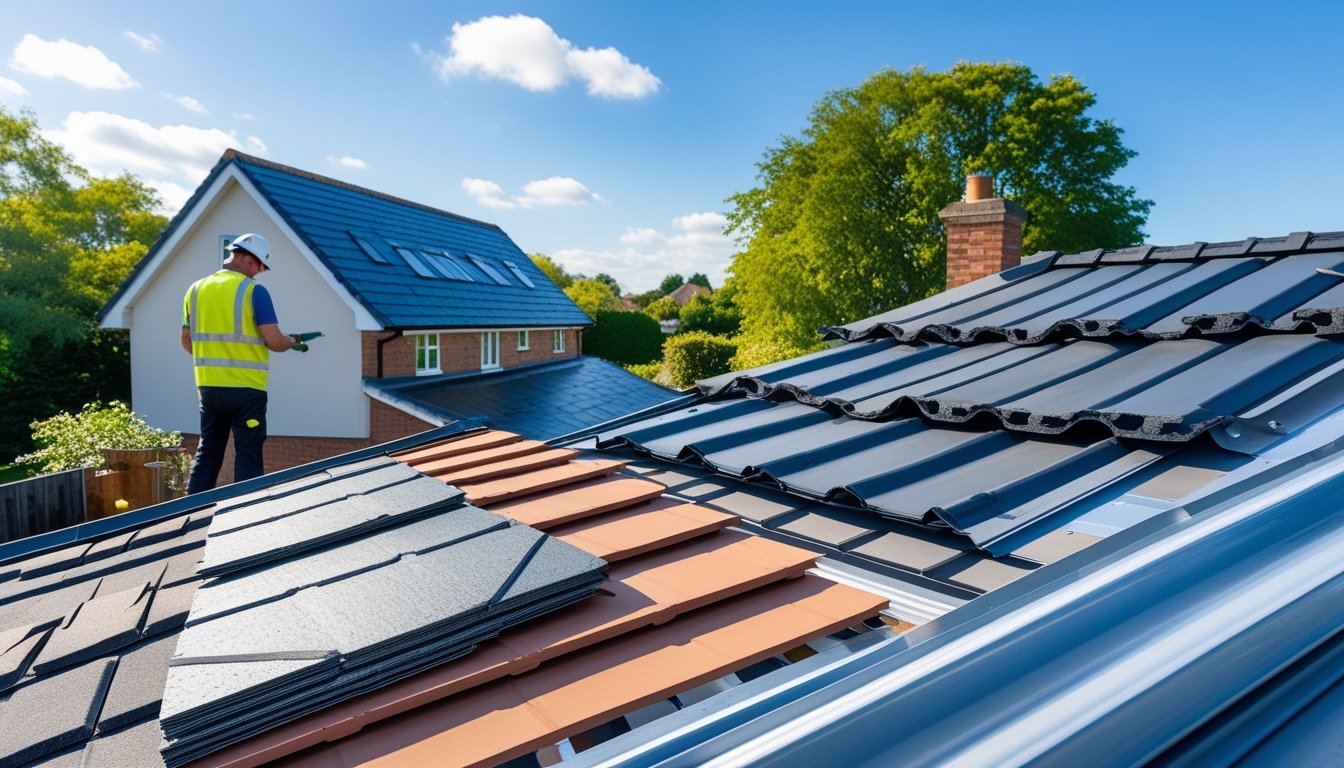Late updated: 01 Aug 2025 13:08
Written by: Oliver Bennett
Tips For Choosing Long-Lasting UK Roofing Materials: A Guide for Durable Homes
Choosing the right roofing material is essential for any UK homeowner aiming for longevity and durability. With the British weather being notoriously unpredictable, it's vital to select materials that can withstand the elements while maintaining their aesthetic appeal. Selecting durable roofing materials ensures not only a longer lifespan for your roof but also enhances the protection and value of your home.

A variety of materials such as slate, metal, and tiles offers different benefits and lifespans, making the decision-making process challenging yet crucial. We need to balance durability with aesthetics, cost, and environmental sustainability to make an informed choice. By understanding these factors, we can significantly reduce the frequency of costly roof replacements.
Our insights, combined with expert advice, will guide you through the key factors to consider when selecting roofing materials. This will not only help prolong your roof's lifespan but also ensure it stands firm against the test of time and weather.
Key Takeaways
- Roof material choice is vital for longevity and durability.
- Balance durability with cost and aesthetics.
- Informed choices can minimise roof replacement frequency.
Key Factors When Choosing Long-Lasting UK Roofing Materials

Selecting the right roofing material involves various factors that affect its longevity and performance. We need to consider durability, climate impact, cost, and architectural style to achieve a roof that offers both longevity and aesthetic appeal.
Durability and Lifespan Considerations
The longevity of roofing materials is vital. Options like slate and clay tiles are known for their durability, lasting for over 50 years with proper maintenance. Concrete tiles also offer a long lifespan, making them a popular choice. Metal roofing, although newer, provides a contemporary look and can last up to 70 years. Consider the material's resistance to wear and tear, and assess whether it fits the home's overall maintenance needs.
Impact of Climate and Weather Conditions
The UK's weather can be unpredictable. Thus, selecting a roof that withstands rain, wind, and occasional snow is essential. Certain materials like clay and concrete tiles excel in rainy environments due to their water resistance. While slate roofs handle the gradual changes in temperature well, synthetic alternatives might suffer wear over time. Considering the local climate helps in choosing a material that withstands these weather patterns without frequent repairs.
Cost versus Lifetime Value
When weighing cost against value, it's crucial to think long term. While premium materials like slate and clay might have higher initial costs, their long lifespan often makes them cost-effective choices over time. On the other hand, more affordable materials might incur frequent replacements and repairs. Calculating the total cost, which includes installation and maintenance, helps evaluate whether the investment pays off in the long run.
Aesthetic Compatibility with Architectural Styles
The roof significantly contributes to a property's appearance. Choosing a material that complements the architectural design is as crucial as its functional attributes. Natural materials like slate offer a classic look, ideal for traditional homes, while metal roofing presents a sleek, modern aesthetic. The colour and texture of the roofing should enhance the building’s style, creating a cohesive visual impact that adds value and beauty.
Each element is equally important to consider when selecting long-lasting roofing materials in the UK. Proper evaluation of these factors ensures both durability and harmonious integration with the building's style. By investing time to assess these aspects, we can make informed choices that ensure both performance and aesthetic appeal for years to come.
Comparison of Roofing Materials for Durability and Longevity
When we evaluate roofing materials for durability and longevity, several options stand out. Slate, clay tiles, and metal roofing are known for their exceptional lifespan and performance. Asphalt shingles offer a balance of affordability and reliability. Each material has unique benefits and suits different requirements and budgets.
Slate Roofing: Timeless Durability and Performance
Slate roofing, one of the most durable options available, can last over a century with proper care. Known for its natural aesthetic, slate's durability stems from its stone composition, providing excellent resistance against harsh weather conditions.
In the UK, this material is popular for its ability to withstand heavy rain and snow. However, slate roofing is quite heavy, necessitating a strong underlying structure. While the initial cost can be high, its long-lasting nature makes it an excellent long-term investment. The elegance and performance of slate make it a timeless choice for those prioritising durability and an attractive finish.
Advantages of Clay Tiles in the UK
Clay tiles offer impressive durability and a traditional appearance that complements many UK homes. They can last up to 100 years when correctly installed and maintained. The natural materials used in clay tiles provide robust protection against the elements.
Their resistance to rot, insects, and fire adds to their appeal. Clay tiles are also energy-efficient, helping to insulate homes and reduce energy costs over time. While the weight and installation process demand a sturdy roof structure and experienced labour, the aesthetic and durability benefits are clear.
Modern Benefits of Metal Roofing
Metal roofing is increasingly popular due to its modern look and long lifespan. Primarily made from steel or aluminium, these roofs are lightweight, reducing the need for a heavy support structure. They offer excellent resistance to wind, rain, and even fire, ensuring decades of reliable service.
In the UK, metal roofs are valued for their low maintenance needs and the ability to be recycled at the end of their life span. While the initial cost can be higher than some alternatives, the longevity and energy efficiency often justify the investment. Metal roofing is ideal for homeowners seeking modern aesthetics and robust performance.
Suitability of Asphalt Shingles
Asphalt shingles provide a cost-effective roofing solution with reasonable durability. They offer a lifespan of 15 to 30 years, depending on the quality of materials and installation. In the UK, shingles are valued for their affordability and ease of installation.
Although they do not last as long as slate or clay tiles, they remain a popular choice due to their balance between cost and performance. Regular maintenance can extend their lifespan considerably, making them a practical option for those on a budget. Asphalt shingles offer diverse styles and colours, appealing to homeowners seeking versatility alongside durability.
Frequently Asked Questions

Choosing the right roofing materials requires understanding their suitability for the UK's weather conditions, cost-effectiveness, and maintenance. In this section, we address common questions about selecting durable roofing materials to help ensure a lasting roof.
What factors should be considered to ensure the durability of roofing materials in the UK climate?
In the UK, weather can be quite variable. We should prioritise materials that withstand rain, wind, and seasonal changes. Roofs like slate and metal offer excellent durability in these conditions. Selecting materials that resist moisture and provide effective drainage is also crucial.
How does the lifespan of various roofing materials compare under common UK weather conditions?
Different materials have distinct lifespans. Slate and metal are among the longest-lasting, often exceeding 50 years. Clay tiles last around 40 years, while asphalt shingles may need replacement after 15-20 years. Climate impacts these lifespans, emphasising the need to choose weather-resilient options.
What maintenance requirements should be anticipated for different types of roofing materials?
Every roofing material comes with specific maintenance needs. Metal roofs require periodic checks for rust, while slate and clay tiles must be inspected for breakage. Asphalt shingles demand more frequent maintenance, including debris removal and is more prone to moss growth in damp conditions.
Are there specific roofing materials that perform best in coastal or high-wind regions of the UK?
Coastal and windy areas require robust materials to withstand harsh weather. Metal roofs are highly recommended for their wind resistance, and fibre cement slates cope well with salty air. Proper installation techniques are also vital for optimal performance in these challenging environments.
What are the most cost-effective roofing materials when considering longevity and performance?
Slate and clay tiles offer excellent performance but tend to be more expensive initially. Asphalt shingles are budget-friendly but have a shorter lifespan, affecting their long-term cost-effectiveness. Metal roofing, though pricier upfront, provides significant savings over time through durability and reduced maintenance.
How do industry standards and certifications impact the longevity of roofing materials?
Certification ensures material quality and adherence to industry standards, which impacts roof longevity. We should look for materials meeting recognised British standards, as these have undergone testing for performance. Products with proven reliability often come from manufacturers with reputations for quality assurance.
